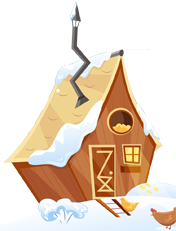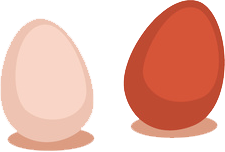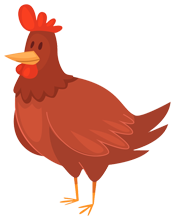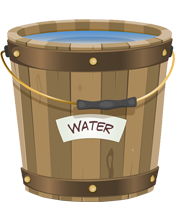
The Definitive Guide To Keeping Chickens In Winter
Welcome to The Definitive Guide To Keeping Chickens In Winter. Raising chickens during winter can be a challenging time for backyard chicken owners. With those dark cold mornings and the drop in egg production, it’s no wonder we don’t like this time of year!
So I decided to write this guide as an aid for all backyard chicken owners, and to answer all your questions about how to care for your chickens during winter: how to keep them warm, how to stop predators, how to keep your egg production high… you will find all the answers here.
Each chapter can be read as a standalone guide on a specific topic; however you should make sure you try and read the entire guide to get the most out of it. You can drop in and out of it as needed, or you can read the entire guide cover to cover right now!
As each Chapter is a quite in-depth article, the full chapter’s are available via the link!
Winterizing Your Coop

In the first chapter of our definitive winter guide, we are going to look at how to prepare your coop so it’s ready for winter.
Mother Nature built the chicken to withstand some fairly extreme environments. The layers of downy feathers under the visible plumage can be puffed up to catch air against the body, providing extra warmth in cold climates. This gives them insulation against cold air.
However during the darkest days in winter these feathers aren’t enough to keep your chickens warm, which is why you provide them with a coop to roost in during nighttime.
The ideal coop should be warm, secure and draft proof; however it should also provide ventilation for your girls. Let’s take a look at each point in turn.
Keep Egg Laying High During Winter

One of the biggest problems backyard chicken owners face during the winter months is keeping their egg supply going. If you’ve kept chickens during the winter months before, you will know that unfortunately, if you let nature take its course, your hens will stop laying completely during this period.
I’ve raised chickens for over 7 years, and know just how bad it feels to see your egg production go down from 12 fresh eggs every day to 1 or 2 eggs… if you’re lucky!
Keeping your hens laying during winter can be difficult and you will definitely need more than just additional lighting. However, after reading the second chapter of our definitive guide, you will know exactly what it takes to keep your supply of fresh eggs during the winter months.
Feeding Chickens In Winter

During the wintertime your hens’ dietary requirements will change as they molt and prepare for the cold, dark winter whilst their body recuperates for next spring.
Not only will their dietary requirements change but the volume of food they eat will also change during the winter. It’s important that during these changes you keep an eye on your hens and provide them with not only the right food but the right amount of food.
In this chapter of the definitive guide to keeping chickens in winter, we will explain what types of food you should feed your chickens during winter and also how much food you should give them.
Stop Your Chickens’ Water Freezing

During the winter periods your hens don’t need as much water as they do in the summer; however it’s still vitally important that they get an adequate supply.
On average their water intake will decrease by around 3 times during winter when compared to summertime.
Depending on where you live, wintertime for your chickens can be anything from a mild discomfort to an absolute nightmare! Trudging back and forth to the hen house two or three times a day, carrying buckets of water, in heavy snow is not for the faint of heart!
In this chapter we’re going to look at why chickens need water, how much water they need, and how to supply your chickens with fresh water during the winter months.
Chickens Molting During Winter

In the fifth chapter of The Definitive Guide To Keeping Chickens In Winter, we look at molting.
So, you opened up the hen house in the morning and thought it was a crime scene from CSI. Feathers strewn around the floor in heaps…you think the worst!
A predator killed the girls, but no, they are all calmly perched on their roosts chirping away to themselves. What happened??
The molt has started.
What is the molt? Why does it happen? How does it affect your hens? These are just some of the questions we will answer here for you today.
Every year along with the leaves falling and the days’ shortening, chickens over the age of twelve months will molt their old, worn out feathers to grow new ones.
Winterizing Your Run

In this chapter we will discuss how to make sure your chickens’ run is ready for the winter.
During the winter you shouldn’t let your chickens free range: they should be kept in the coop/run area, and this is why it’s important that their run is ready for the wintertime.
The most important aspect of the run is to keep them safe from predators, but it should also help keep them warm.
Let’s first look at how to make sure your run is predator proof.



















Is there a printed version of The Definitve guide to keeping chickens in the winter. If so how much is it and how caan I get a copy?
Could you send me a copy of the guide for chickens?
Could you email me a copy of this please, I can’t download on my work computer and all I have at home is an Ipad.